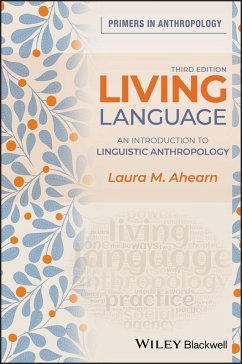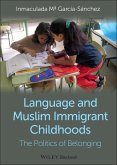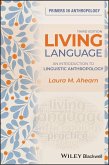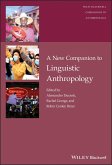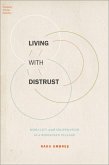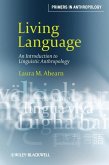A new, fully revised edition of this bestselling textbook in linguistic anthropology, updated to address the impacts of globalization, pandemics, and other contemporary socio-economic issues in the study of language
Living Language: An Introduction to Linguistic Anthropology has introduced thousands of students to the engaging and compelling field of linguistic anthropology. Now in a new, fully updated and revised third edition, this bestselling textbook provides a student-friendly exploration of language as a social and cultural practice. Covering both theory and real-world practice, this clear and highly accessible textbook examines the relationship between language and social context while highlighting the advantages of an ethnographic approach to the study of language. The third edition includes a timely new chapter that investigates how technologies such as social media and online meetings have changed language. The new edition also considers the impact of the COVID-19 pandemic on linguistic practices, ensuring that this text will be a valuable resource for students for years to come. This insightful text:
Requiring no prior knowledge in linguistics or anthropology, Living Language: An Introduction to Linguistic Anthropology, Third Edition, is the perfect textbook for undergraduate and graduate courses in introductory linguistic anthropology as well as related courses in sociolinguistics, sociology, and communication.
Living Language: An Introduction to Linguistic Anthropology has introduced thousands of students to the engaging and compelling field of linguistic anthropology. Now in a new, fully updated and revised third edition, this bestselling textbook provides a student-friendly exploration of language as a social and cultural practice. Covering both theory and real-world practice, this clear and highly accessible textbook examines the relationship between language and social context while highlighting the advantages of an ethnographic approach to the study of language. The third edition includes a timely new chapter that investigates how technologies such as social media and online meetings have changed language. The new edition also considers the impact of the COVID-19 pandemic on linguistic practices, ensuring that this text will be a valuable resource for students for years to come. This insightful text:
- Offers an engaging introduction to the field of linguistic anthropology
- Features all-new material covering contemporary technologies and global developments
- Explains how language use is studied as a form of social action
- Covers nonverbal and multimodal communication, language acquisition and socialization, the relationship between language and thought, and language endangerment and revitalization
- Explores various forms of linguistic and social communities, and discusses social and linguistic differentiation and inequality along racial, ethnic, and gender dimensions
Requiring no prior knowledge in linguistics or anthropology, Living Language: An Introduction to Linguistic Anthropology, Third Edition, is the perfect textbook for undergraduate and graduate courses in introductory linguistic anthropology as well as related courses in sociolinguistics, sociology, and communication.
Dieser Download kann aus rechtlichen Gründen nur mit Rechnungsadresse in D ausgeliefert werden.

